NIL
Quinn Ewers Makes Ultimate NIL Admission
The Texas Longhorns are without Quinn Ewers after he left for the 2025 NFL Draft. The Miami Dolphins drafted Ewers in the seventh round of the draft. In a recent interview with On3’s Nick Schultz, Ewers used the word unconventional to describe his NIL experience in college football. NIL became legal in college football in […]
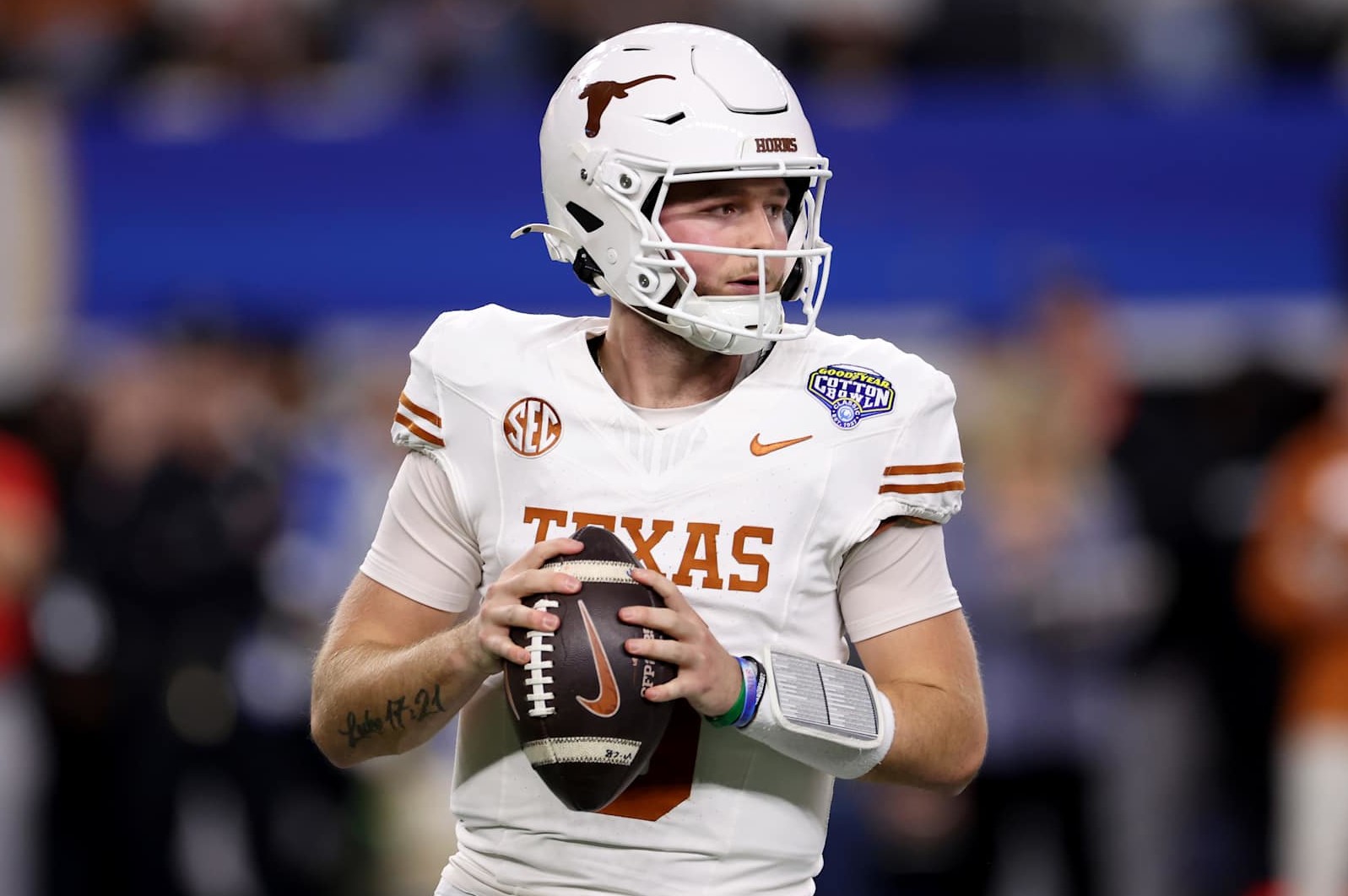
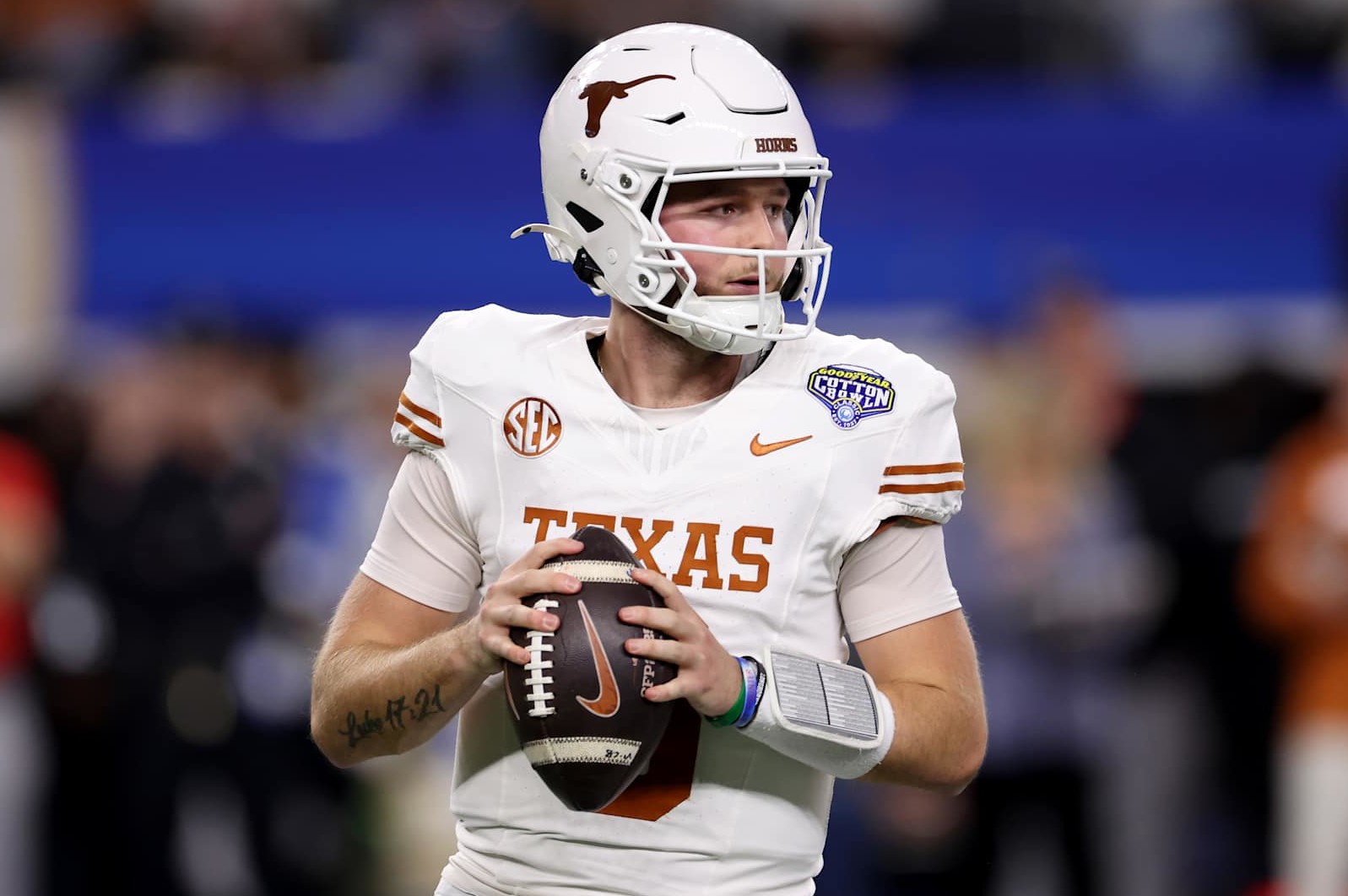
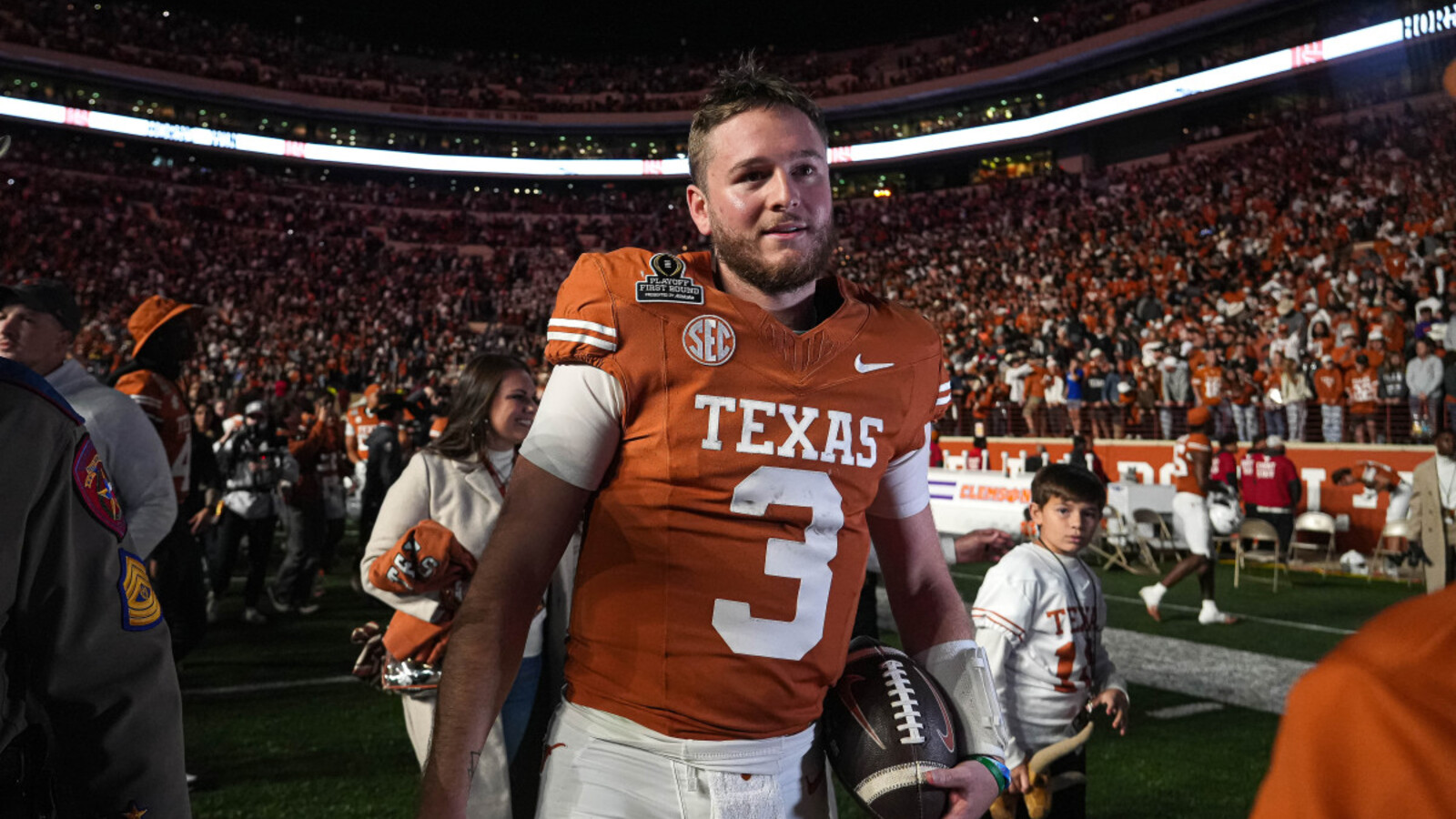
The Texas Longhorns are without Quinn Ewers after he left for the 2025 NFL Draft.
The Miami Dolphins drafted Ewers in the seventh round of the draft. In a recent interview with On3’s Nick Schultz, Ewers used the word unconventional to describe his NIL experience in college football.
NIL became legal in college football in July of 2021.
Ewers started his college career with the Ohio State Buckeyes in 2021. He was the top recruit and quarterback in the 2021 class. He played in one game for Ohio State in the 2021 season and then hit the transfer portal.
He was the No. 2 quarterback in the On3 Transfer Portal Industry Rankings, committed to Texas, and the rest is history.
“The way that it’s kind of been set up for me has been nothing short of unconventional, I think I would say,” Ewers said. “Skipping my senior year to enroll at Ohio State early, and then be there for not even a whole calendar year, and then decide to go back to my home state of Texas, and really, turn around a program that hadn’t really won anything in years, consistently.”
When Ewers left Texas, his NIL valuation was $4.5 million.
He threw for 9,218 passing yards, 68 touchdowns and 24 interceptions.
Not everyone agreed with Ewers’ decision to leave for the NFL. If Ewers had stayed at Texas for another year, he reportedly would have made $8 million in NIL money, per 247Sports’ Chip Brown.
Some criticized the move, but not Josh Pate. Pate credited Ewers for focusing on legacy more than NIL.
Now that Ewers is gone, Texas’ starting quarterback for 2025 is expected to be Arch Manning. The Longhorns have already looked in the portal for Manning’s backup, bringing in former Troy quarterback Matthew Caldwell.
Texas opens the 2025 season against Ohio State on Aug. 30.
NIL
5 House settlement changes college fans will notice immediately
NCAA Division I Board of Directors has taken action to approve rules changes that — if the proposed House-NCAA settlement is approved — will align the D-1 rule book with terms of the settlement. pic.twitter.com/5jHvVu1UVA — Steve Berkowitz (@ByBerkowitz) April 21, 2025 It’s a new dawn in the world of college athletics. On Friday night […]
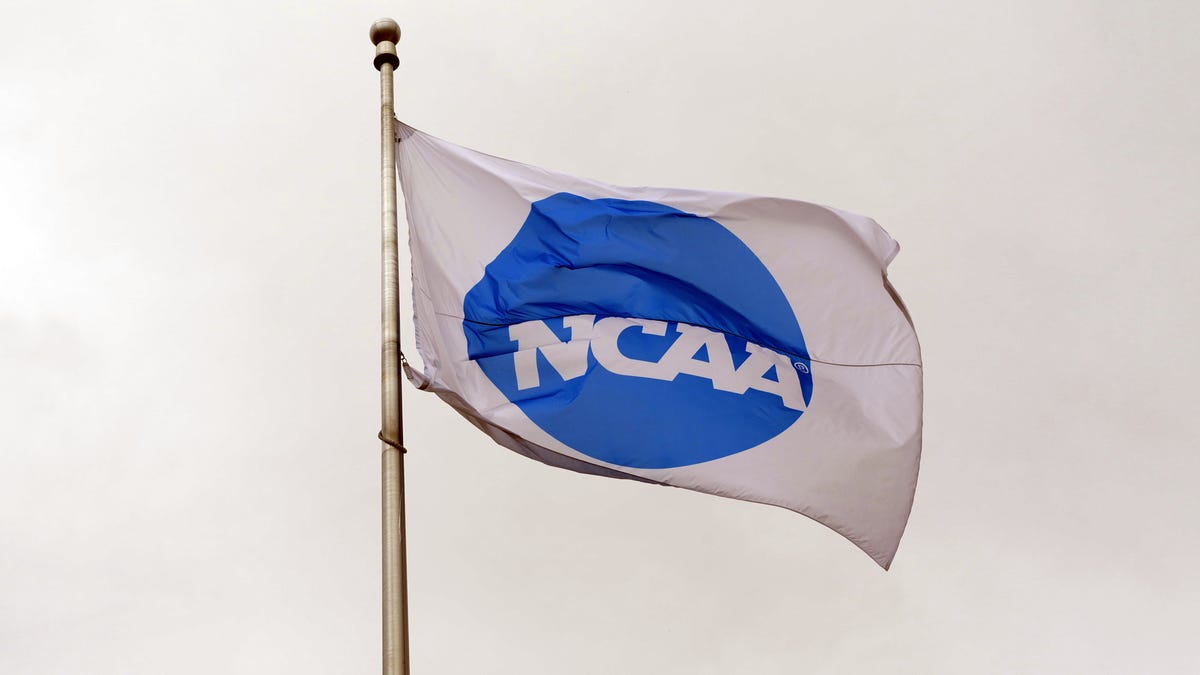
It’s a new dawn in the world of college athletics. On Friday night the long-awaited $2.8 billion House settlement was approved, officially ushering in an era where schools can directly pay players.
Immediately after the landmark agreement, a number of new entities and executives emerged to lead college sports into the future. While this is all expected to play out in the coming months and years, there is already A LOT of moving pieces.
GAME THE SYSTEM: 5 petty ways fans can weaponize EA Sports usage payouts in College Football 26
You can read all about what’s included in the settlement here, but if you’re looking for a quick breakdown of some of the more immediate changes, we’ve got you covered.
Here are the people, terms and regulations you need to know about.
The College Sports Commission
Say goodbye to the NCAA’s wildly unpopular enforcement and penalty process, and say hello to its replacement: the newly-created College Sports Commission. You’re going to be hearing about it a lot when it officially begins operations on July 1, 2025.
Here’s what the new oversight authority will be in charge of policing, per USA TODAY’s Steve Berkowitz:
Rules-making.
Managing the NIL Go system, an electronic system that athletes will be required to use to report the details of their NIL deals with entities other than their schools.
Figuring out how to determine the legitimacy of those deals, and how to deal with appeals by athletes, who — under the settlement — can seek arbitration if they want to challenge a determination that a deal is not legitimate relative to having a “valid business purpose” and being within “a reasonable range of compensation.”
Forming a new regulatory and enforcement entity that will be led newly named chief executive officer Bryan Seeley. According to the announcement of his hiring on June 6, Seeley “will build out the organization’s investigative and enforcement teams and oversee all of its ongoing operations and stakeholder relationships. … Seeley and his team will also be responsible for enforcement of the new rules around revenue sharing, student-athlete third-party name image and likeness (NIL) deals, and roster limits. The Commission will investigate potential rules violations, make factual determinations, issue penalties where appropriate, and participate in the neutral arbitration process set forth in the settlement as necessary.”
Speaking of enforcement, the CSC is expected to resolve any investigations within 45 days — a major shift from the long, drawn out NCAA investigations fans have come to expect. The CSC’s CEO can be the judge, jury and executioner here with the ability to impose fines and penalties.
College Sports Commission CEO Bryan Seeley
For all intents and purposes, Seeley is the new top dog when it comes to college sports compliance. He was hired by the four power conference commissioners (ACC’s Jim Phillips, Big Ten’s Tony Petitti, Big 12’s Brett Yormark and SEC’s Greg Sankey).
So here’s the skinny, per ESPN’s Jeff Passan and Pete Thamel:
Seeley is MLB’s executive vice president, legal & operations, and he brings investigative experience, which will be key in this role. In the post-settlement era, the NCAA will no longer be in charge of the enforcement of most rules. (It will still maintain purview over things like academics, but it will not patrol benefits.)
The CSC is the new era’s enforcement arm that will have final say in doling out punishments and deciding when rules have been broken. It’s one of the most important roles in this new era, as the industry has been craving some type of guidance since the advent of name, imagine and likeness has made the descriptor “wild, wild west” a common one in regard to the generally unregulated college sports industry.
In a formal announcement, Seeley’s job is described as having to “build out the organization’s investigative and enforcement teams and oversee all of its ongoing operations and stakeholder relationships.” Per the release: “Seeley and his team will also be responsible for enforcement of the new rules around revenue sharing, student-athlete third-party name image and likeness (NIL) deals, and roster limits.”
Some more quick facts about Seeley:
- 42 years old
- Joined MLB as Vice President, Investigations & Deputy General Counsel in 2014
- Served as Assistant U.S. Attorney in Washington D.C. from 2006-2014, prosecuting white-collar crimes, fraud and corruption
- Attended Princeton University and Harvard Law School
NIL GO
No, this is not the latest streaming service. It’s a clearinghouse established by Deloitte to handle number-crunching and maintain compliance between schools, athletes and third parties. It will also fall under the CSC’s purview.
Per ESPN’s Pete Thamel and Jeff Passan:
LBi Software and accounting firm Deloitte have been lined up to handle salary cap management and to manage the clearinghouse for NIL. Those NIL deals will be outside of the revenue share directly from schools, and how they are approved has been the focus of much conversation around college sports.
The clearinghouse that Deloitte has established will be known as NIL Go, which will be used to verify whether deals between athletes and boosters or associated entities are for a valid business purpose rather than a recruiting incentive.
Whether or not a school opts in to provide NIL payments to athletes, any Division I athletes who signs an NIL deal worth $600 or more will have to go through NIL GO.
Salary Cap And Roster Limits
Yep, it’s happening in college sports.
Schools will start with a $20.5 million cap that’s set to increase by four percent annually, with a notable caveat, per Berkowitz:
In Years 4, 7 and 10, new baselines would be established based on the defined set of Power Five athletics department revenues. However, under certain circumstances connected to the timing and value of media rights contracts, the plaintiffs’ lawyers have two options during the 10-year settlement period to have new baselines set more quickly.
The settlement was temporarily help up in court by the issue of roster limits, as programs already began cutting walk-ons and other players in anticipation of the salary cap. That was resolved through a “grandfathering” agreement that will delay some roster limits if players were already promised a spot.
Per CBS Sports:
[U.S. District Judge Claudia Wilken] asked attorneys to craft a plan to allow current players to be “grandfathered in” with the new roster limits. The NCAA, power conferences and the plaintiffs in the lawsuit instead offered a compromise: schools have the option to keep current players on their rosters and temporarily exceed new limits until their eligibility expires.
The new roster limits were expected to lead to the cutting of nearly 5,000 athletes from teams across the NCAA’s 43 sponsored sports. Some sports will increase roster limits compared to previous years, but many will be trimmed despite offering unlimited scholarships within those new thresholds. Football rosters will shrink to 105 players, resulting in schools cutting more than 20 players, though most schools are expected to exceed those limits by grandfathering in current athletes.
March 1 Deadline For Non-Power 5 Schools
The start of March has now become one of the most crucial days on the sports calendar as non-Power 5 schools will have to declare by then whether or not they are opting into revenue sharing for the following academic year.
Per the CSC:
All current members of the ACC, Big Ten, Big 12, Pac-12 and SEC are participating in the new revenue sharing model overseen by the College Sports Commission. Division I schools from other conferences can choose to “opt in” to revenue sharing and must formally do so by June 15, 2025, at which point a full list of participating schools will be made public.
Each year, schools outside of the ACC, Big Ten, Big 12, Pac-12 and SEC will have the option to opt in to or out of revenue sharing. These schools must notify the NCAA if they will opt in to (or opt out of) revenue sharing for the upcoming academic year by March 1 of each year. In order to opt out, an institution must have fulfilled any relevant obligations to student-athletes and all revenue sharing – or incremental increases in scholarship – must cease.
It is important to note that regardless of whether an institution opts in to revenue sharing, all Division I student-athletes will be subject to the new rules and requirements around third-party NIL deals.
This is a whole new world of college athletics and there’s a lot to process here. We’ll continue to break down all the developments over the coming months (and years).
NIL
Judge approves NCAA settlement allowing schools to pay athletes: Winners and losers
A federal judge signed off on arguably the biggest change in the history of college sports Friday, clearing the way for schools to begin paying their athletes millions as soon as next month as the multibillion-dollar industry shreds the last vestiges of the amateur model that defined it for more than a century. Nearly five […]
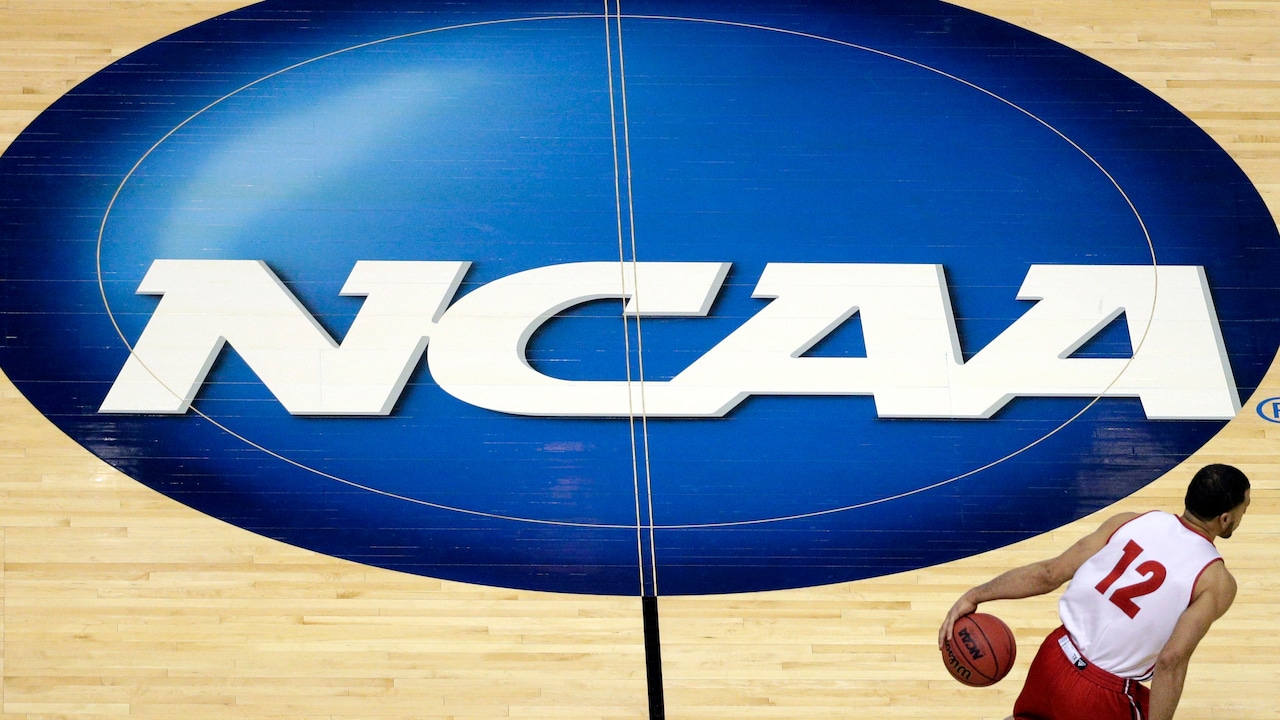
A federal judge signed off on arguably the biggest change in the history of college sports Friday, clearing the way for schools to begin paying their athletes millions as soon as next month as the multibillion-dollar industry shreds the last vestiges of the amateur model that defined it for more than a century.
Nearly five years after Arizona State swimmer Grant House sued the NCAA and its five biggest conferences to lift restrictions on revenue sharing, U.S. Judge Claudia Wilken approved the final proposal that had been hung up on roster limits, just one of many changes ahead amid concerns that thousands of walk-on athletes will lose their chance to play college sports.
The sweeping terms of the so-called House settlement include approval for each school to share up to $20.5 million with athletes over the next year and $2.7 billion that will be paid over the next decade to thousands of former players who were barred from that revenue for years.
Syracuse University has said it intends to distribute the full $20.5 million spending cap on its athletes, though it has declined to say how that money will be distributed across football, men’s and women’s basketball and the other sports.
Le Moyne, which recently moved its sports programs to compete in Division I, has not said how much it will pay its players. Division I schools can choose to “opt in” to revenue sharing by June 15.
All Division I athletes will be subject to the new rules around third-party pay regardless of whether their school opts in to revenue sharing.
One of the lead plaintiff attorneys, Steve Berman, called Friday’s news “a fantastic win for hundreds of thousands of college athletes.”
The agreement brings a seismic shift to hundreds of schools that were forced to reckon with the reality that their players are the ones producing the billions in TV and other revenue, mostly through football and basketball, that keep this machine humming.
The scope of the changes — some have already begun — is difficult to overstate. The professionalization of college athletics will be seen in the high-stakes and expensive recruitment of stars on their way to the NFL and NBA, and they will be felt by athletes whose schools have decided to pare their programs. The agreement will resonate in nearly every one of the NCAA’s 1,100 member schools boasting nearly 500,000 athletes.
NCAA President Charlie Baker said the deal “opens a pathway to begin stabilizing college sports.”
The road to a settlement
Wilken’s ruling comes 11 years after she dealt the first significant blow to the NCAA ideal of amateurism. Then, she ruled in favor of former UCLA basketball player Ed O’Bannon and others seeking a way to earn money from the use of their name, image and likeness (NIL) — a term that is now as common in college sports as “March Madness” or “Roll Tide.”
It was just four years ago that the NCAA cleared the way for NIL money to start flowing, but the changes coming are even bigger.
Wilken granted preliminary approval to the settlement last October. That sent colleges scurrying to determine not only how they were going to afford the payments, but how to regulate an industry that also allows players to cut deals with third parties so long as they are deemed compliant by a newly formed enforcement group that will be run by auditors at Deloitte.
The agreement takes a big chunk of oversight away from the NCAA and puts it in the hands of the four biggest conferences. The ACC, Big Ten, Big 12 and SEC hold most of the power and decision-making heft, especially when it comes to the College Football Playoff, which is the most significant financial driver in the industry and is not under the NCAA umbrella like the March Madness tournaments are.
Roster limits held things up
The deal looked ready to go, but Wilken put a halt to it this spring after listening to a number of players who had lost their spots because of newly imposed roster limits being placed on teams.
The limits were part of a trade-off that allowed the schools to offer scholarships to everyone on the roster, instead of only a fraction, as has been the case for decades. Schools started cutting walk-ons in anticipation of the deal being approved.
Wilken asked for a solution and, after weeks, the parties decided to let anyone cut from a roster — now termed a “Designated Student-Athlete” — return to their old school or play for a new one without counting against the new limit.
Wilken ultimately agreed, going point-by-point through the objectors’ arguments to explain why they didn’t hold up. The main point pushed by the parties was that those roster spots were never guaranteed in the first place.
“The modifications provide Designated Student-Athletes with what they had prior to the roster limits provisions being implemented, which was the opportunity to be on a roster at the discretion of a Division I school,” Wilken wrote.
Her decision, however, took nearly a month to write, leaving the schools and conferences in limbo — unsure if the plans they’d been making for months, really years, would go into play.
“It remains to be seen how this will impact the future of inter-collegiate athletics — but as we continue to evolve, Carolina remains committed to providing outstanding experiences and broad-based programming to student-athletes,” North Carolina athletic director Bubba Cunningham said.
Winners and losers
The list of winners and losers is long and, in some cases, hard to tease out.
A rough guide of winners would include football and basketball stars at the biggest schools, which will devote much of their bankroll to signing and retaining them. For instance, Michigan quarterback Bryce Underwood’s NIL deal is reportedly worth between $10.5 million and $12 million.
Losers, despite Wilken’s ruling, figure to be at least some of the walk-ons and partial scholarship athletes whose spots are gone.
Also in limbo are the Olympic sports many of those athletes play and that serve as the main pipeline for a U.S. team that has won the most medals at every Olympics since the downfall of the Soviet Union.
All this is a price worth paying, according to the attorneys who crafted the settlement and argue they delivered exactly what they were asked for: an attempt to put more money in the pockets of the players whose sweat and toil keep people watching from the start of football season through March Madness and the College World Series in June.
What the settlement does not solve is the threat of further litigation.
Though this deal brings some uniformity to the rules, states still have separate laws regarding how NIL can be doled out, which could lead to legal challenges. Baker has been consistent in pushing for federal legislation that would put college sports under one rulebook and, if he has his way, provide some form of antitrust protection to prevent the new model from being disrupted again.
NIL
Blue Jays Roundup: Avery Graves named All-State
Jun. 6—JAMESTOWN — One Blue Jay was recognized as one of the best in the state of North Dakota. Avery Graves, a junior for the Jamestown High School softball team, was named to the 2025 Class A Softball All-State Team on Friday. Advertisement Graves, the starting first baseman, posted a batting average of .449 and […]

Jun. 6—JAMESTOWN — One Blue Jay was recognized as one of the best in the state of North Dakota.
Avery Graves, a junior for the Jamestown High School softball team, was named to the 2025 Class A Softball All-State Team on Friday.
Advertisement
Graves, the starting first baseman, posted a batting average of .449 and a slugging percentage of .692 this season. The senior produced 48 hits — 32 singles, 11 doubles and five home runs. The junior recorded 48 RBIs.
2025 Class A Softball All-State Team
Avery Graves, Jamestown
Halle Baker, Minot
Madison Aadland, West Fargo Sheyenne
Jocelyn Berg, Grand Forks Red River
Riley Ingemansen, Legacy
Rylee Irgens, Williston
Mya Jones, Bismarck High
Katelyn Kackman, West Fargo
Olivia Kalbus, Fargo North
Aubrey King, Fargo North
Mackenna Medina, Dickinson
Jada Purdy, Fargo North
Sophia Rerick, Fargo Davies
Cadey Shipman, Minot North
Advertisement
Gabi Sobolik, Dickinson
Brooklyn Soderberg, Grand Forks Red River
Presley Tveter, West Fargo Sheyenne
Kaebry Weekes, Mandan
Ali Wilcox, Williston
NDHSCA POWERade Outstanding Senior Athlete — Aubrey King, Fargo North
NDHSCA SUBWAY Coach of the Year — Jesse Stundal, Williston
NIL
EA Sports to pay schools based on how often they’re played in new College Football video game
The long-awaited approval of the House settlement late Friday night is supposed to make it more difficult for individuals to affect the NIL market. Moving forward, players will be paid through highly-regulated revenue share payments directly from their schools, and third-party-approved NIL payments for “legitimate” business purposes. But if every single gamer gets together and […]

The long-awaited approval of the House settlement late Friday night is supposed to make it more difficult for individuals to affect the NIL market. Moving forward, players will be paid through highly-regulated revenue share payments directly from their schools, and third-party-approved NIL payments for “legitimate” business purposes. But if every single gamer gets together and decides to play EA Sports College Football 26 exclusively as the Akron Zips, together they can potentially tip the balance of power in the Mid-American Conference.
In short, schools will receive royalty payments for how often users play as them within the game. From the documents:
“For each CFB product released by EA SPORTS, we (CLC Learfield) will provide a percentage for each institution based on the games played for that institution as a percentage of the total games played across all institutions. This percentage of games played will become the final allocation percentage for each school that will be applied to the total gross royalties for all institutions received.”
Now, we have lots of questions:
1) How much money is set aside in this fund?
2) How is EA calculating what percentage of total revenue goes into this fund? Typically, royalties are derived from a percentage of overall sales — i.e., if I sell 100 Albert the Gator keychains for $5 apiece, the University of Florida would get 10 percent of that $500. But EA gets its money when people buy the game, not when they play it.
3) Does this royalty fund last forever? Are schools going to be getting checks in 2031 for how often they’re being played in College Football 26?
College Football 25 needed only five months to become the best-selling sports video game of all-time, and it was streamed a reported 1.7 billion times. It’s unlikely the sequel will duplicate those numbers given the decade-plus wait for College Football 25, but 26 will still be a widely-selling game.
The new royalty structure replaces the previous edition, where EA Sports slotted teams into tiers based on how often they appeared in the year-end AP Top 25 over the previous decade. The 13 schools who made it into Tier 1 received nearly $100,000 in royalties apiece, while the 54 schools in Tier 4 netted around $10,000.
All 136 FBS schools opted into EA’s new pay-for-play royalty structure, so clearly they believe this system has more in it for them.
The players will also see higher checks for appearing in 26 vs. 25. Each player received a $600 check and a free copy of the game for appearing in College Football 25, but in 26 they’ll receive between $1,500 and $3,000 apiece.
NIL
College sports power conferences hire MLB exec to serve in CEO role after House v. NCAA settlement approval
College sports’ power conferences — Big Ten, SEC, ACC and Big 12 — have hired a high-profile investigator in professional sports to lead their new governing body that will oversee revenue sharing and NIL contracts. MLB executive Bryan Seeley has been hired after a months-long search for a CEO to lead the new College Sports […]

College sports’ power conferences — Big Ten, SEC, ACC and Big 12 — have hired a high-profile investigator in professional sports to lead their new governing body that will oversee revenue sharing and NIL contracts.
MLB executive Bryan Seeley has been hired after a months-long search for a CEO to lead the new College Sports Commission, a spokesperson for the power conferences told CBS Sports on Friday. Seeley emerged as the leader in May as the four commissioners, alongside a group of athletic directors, began finalizing plans for implementation of the long-awaited House v. NCAA settlement, which was approved on Friday.
All four power conference commisioners released a joint statement commending Seeley’s hiring.
“Bryan brings unwavering integrity and a wealth of relevant experience to his new role leading the College Sports Commission and working to ensure a smooth implementation of this new system,” the statement read. “We’re grateful to have an individual with his credentials and expertise at the helm, and we look forward to his leadership as we transition into this new era of college sports.”
Seeley has spent the last decade working for MLB, where he is currently the executive vice president of legal and operations. He was hired in September 2014 to lead MLB’s investigation department after a career as a federal prosecutor and an assistant U.S. Attorney for the Department of Justice’s public corruption section.
“Bryan is an exceptional choice to lead the College Sports Commission,” Major League Baseball Commissioner Rob Manfred said. “During his time at MLB, Bryan demonstrated unparalleled integrity, a commitment to fairness, and the ability to navigate complex challenges with precision and care. I have no doubt he will bring the same level of excellence to the College Sports Commission. College sports will greatly benefit from Bryan’s expertise and vision.”
House v. NCAA settlement fundamentally alters college athletics, but don’t expect it to bring stability
Chris Hummer
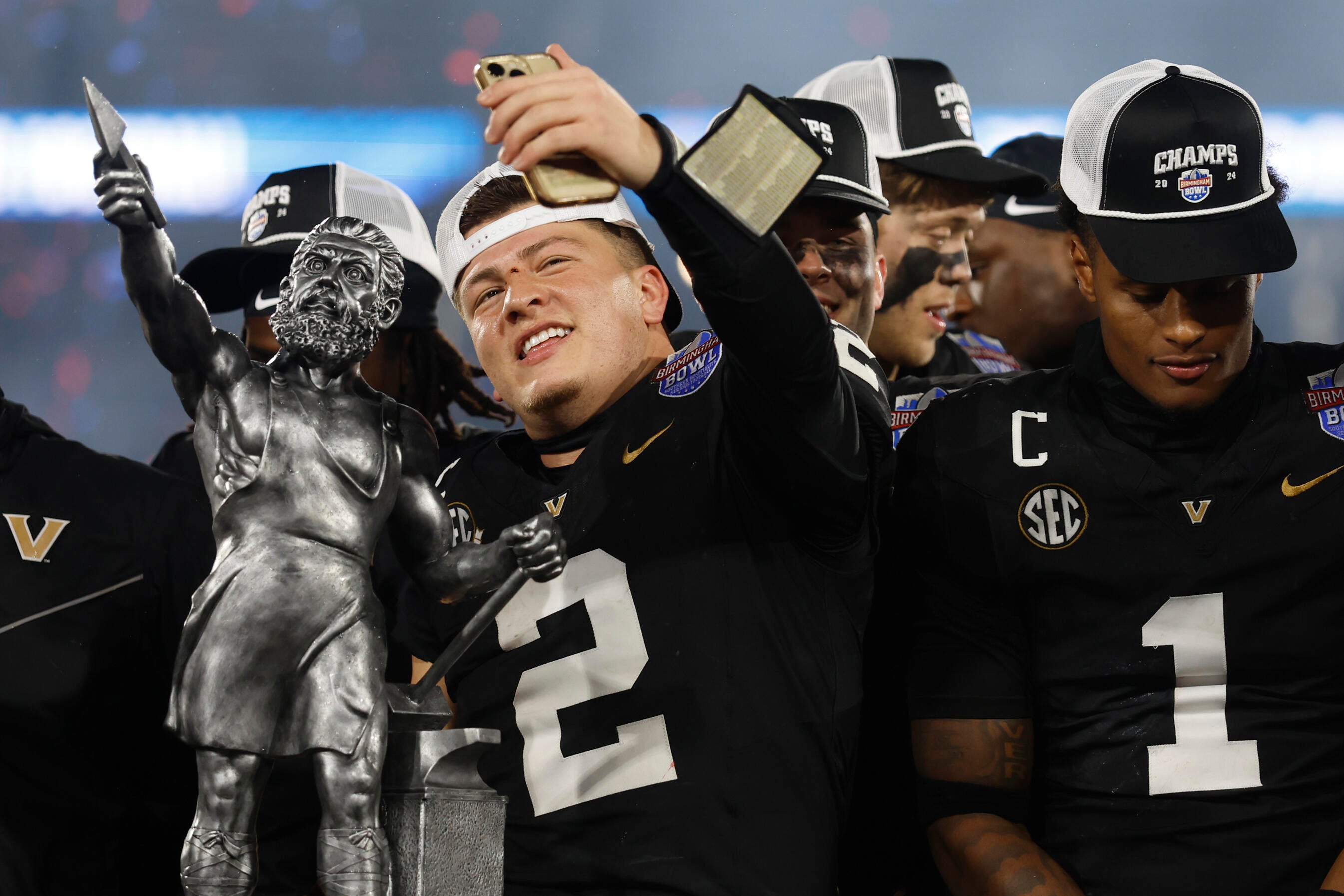
He had an extensive career as an investigator for MLB, where he led baseball’s investigation into sign stealing, which led to penalties for the Houston Astros and Boston Red Sox. He recently penned a letter to the Commodity Futures Trading Commission lobbying for more integrity for exchange-based platforms.
Seeley will report directly to the ACC, Big Ten, Big 12 and SEC’s commissioners in his new role. Seeley worked alongside Big Ten commissioner Tony Petitti when Petitti led the MLB Network in the late 2010s. Petitti was crucial in the targeting of Seeley as the CSC’s new CEO, sources told CBS Sports.
On Friday, Judge Claudia Wilken finally approved the $2.8 billion settlement after weeks of waiting from plaintiffs and the defendants in the landmark antitrust case. The CSC will be overseen by the power conferences and mostly operate outside the NCAA’s rules-enforcement umbrella.
The CSC will police and enforce NIL and revenue-sharing rules tied to the terms of the House settlement. In essence, the CSC is set to become a smaller, more agile version of the NCAA’s enforcement arm. The CEO will have final say on settlement-related items and enforcement of fair market value NIL deals of greater than $600, according to sources.
Scrutinized NIL deals would be subject to arbitration, and if the third party sides with the CSC’s findings, players and universities would face penalties — the severity of which is not yet entirely known. The new CEO is expected to have considerable latitude to penalize as they see fit, according to those familiar with the situation, and won’t be boxed into a strict penalty structure that must be followed.
An athlete who accepts a deal flagged by a Deloitte-administered clearinghouse called “NIL Go” as “pay for play” and does not meet a fair market value range would be ruled ineligible. The clearinghouse will give a range — say $75,000-$85,0000 — on what a deal should be worth based on market data and will flag a deal that fits the criteria but is for more than that amount. While the NCAA’s investigations typically take months to years, the CSC is expected to conduct and close investigations in a considerably more timely manner. The hope is that the process will be more transparent, too, and give schools more opportunity to have a say in it.
Meanwhile, the membership agreement for the CSC has prompted questions about its legality in a system that has been under attack in the court system for years, from the O’Bannon case to Alston to House, which was filed in 2020 and helped lead to the implementation of NIL regulations from the NCAA in 2021. Those regulations, however, have proven toothless in the face of legal challenges and legislation in more than 30 states. The question that arises now anytime new rules are introduced: Is this legally enforceable?
The thinking among college leaders is the CSC will have some legal protection because of the House settlement. Current players who opt into the settlement are bound to the terms, which include the formation of the CSC as an enforcement entity. That entity, as explained in the settlement terms, is required to install a binding arbitration process, which players are required to follow as members of the settlement. Essentially, the athletes cannot sue over a deal flagged as not meeting fair market value.
“Unless the new state laws specifically create a new legal claim that gives them right to sue, which I don’t think they do, the players’ legal claims would still be wiped out by the settlement,” said Sam Ehrlich, a sports law professor at Boise State. “And even if the rules do allow players to sue, there’s a strong argument that the settlement also blocks similar claims under state law since it’s a similar field of law.”
NIL
The biggest winners and losers from House v. NCAA settlement: Amateurism is dead and the class divide grows
The long-awaited House v. NCAA settlement is finally a reality, paving the way for universities to pay their athletes directly starting on July 1. There is a lot to consider in what could be the most consequential day in college sports history. How are schools going to actually pay their athletes? Who will be policing […]
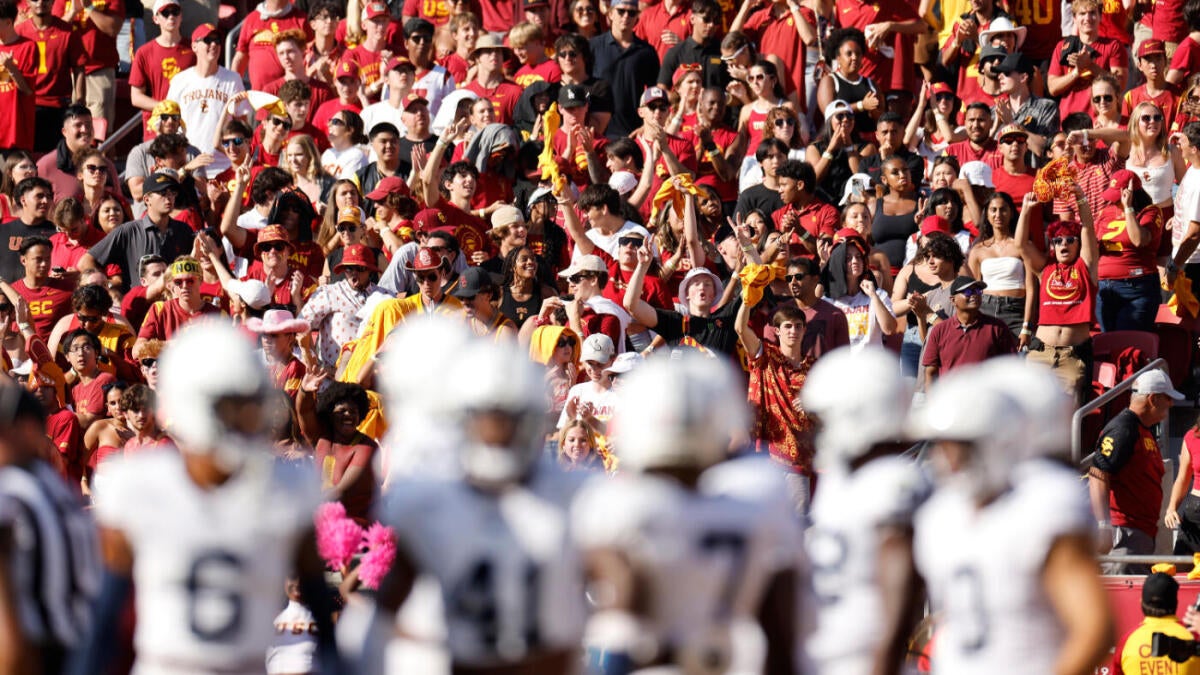
The long-awaited House v. NCAA settlement is finally a reality, paving the way for universities to pay their athletes directly starting on July 1.
There is a lot to consider in what could be the most consequential day in college sports history. How are schools going to actually pay their athletes? Who will be policing this new revenue share world? Will much-needed stability actually come from a House settlement some have hyped as a magic bullet?
Within it all, there are some clear winners and losers who will have their realities dramatically changed in this new post-House world.
Winner: Athletes in the ‘revenue’ sports
It won’t be exclusively football and men’s basketball athletes who will benefit from the House settlement, but they are certainly the biggest benefactors. Those two sports have propped up athletic departments for years, generating the bulk of the revenue and seeing none of the profits. Now schools will have to pay their top athletes considerable money on top of the NIL money they can make elsewhere that’s already been a major boon for many of them.
It is stunning how far things have come in just the last decade, from fights over what are now relatively paltry cost-of-attendance stipends to a world in which football and basketball players can and do make millions.
Loser: Renegade boosters
The early years of NIL featured unique characters like Miami booster John Ruiz who weren’t shy about being willing to spend big money to see their favorite teams win. The money has exploded in recent years from the reported $20 million Ohio State team that won the national championship last season to the $40 million roster era as Indiana’s Curt Cignetti told CBS Sports this spring. In theory, those days are over.
Yes, there is considerable industry skepticism about how a clearinghouse called NIL Go will actually hold up to legal scrutiny and stop boosters from using NIL solely as “pay to play,” but if it does work, as the NCAA and Power Four conferences desperately hope it does, the days of spending $3 million on a defensive end for NIL will be over and eliminate an advantage schools with especially well-heeled boosters have exploited the last four years.
One additional note here: Schools that can tap into local businesses willing to spend real NIL money will be at a big advantage if NIL is strictly policed for “fair market value” as the clearinghouse intends. If your school campus happens to be located in a lucrative metro area, even better.
Winner: The future of collective bargaining
Now that the concept of paying athletes directly is a reality, look for attention to turn to collective bargaining/employment/unionization as the next big topic college sports has to grapple with. There are organizations including Athletes.org that have anticipated this moment and are ready to help push for collective bargaining to help solve many of the new issues that come with the House settlement’s approval.
College athletes becoming employees is the nightmare for many college administrators but you’re seeing a warming to the idea of collective bargaining, including recently from University of Tennessee chancellor Donde Plowman and AD Danny White. A looming case, Johnson v. NCAA, may well rule that athletes should be considered employees. In the meantime, look for more and more ADs and other college sports executives to come around to the idea collective bargaining might be the best hope to enforce rules and solve tricky issues such as the current twice-annual free agency (transfer portal) that has deeply frustrated coaches like Georgia’s Kirby Smart.
Loser: Amateurism
The “student-athlete” moniker has long been a fraud and part of the NCAA’s original sin, but its death becomes official now that universities are able to pay their athletes directly beginning July 1. This has been a long, long time coming and the result of major lawsuits — O’Bannon, Alston and House, to name three — and state laws building to this big moment. Not all fans may like it, but the days of top athletes only receiving room and board are over.
Winner: The Big Ten and SEC
The two richest conferences that will get more money from the College Football Playoff and their TV rights deals than their fellow Power Four brethren (ACC and Big 12) are set up well for this new revenue share world. That’s not exactly a new development — those conferences were doing pretty well in the old system, too — but it should cement their reign over college athletics. And if we see future realignment, or consolidation, more likely it will be because of a deep desire to be in one of these two conferences to help pay for the ballooning expenses that come with revenue sharing.
Winner: Big East basketball
Much of the House settlement focus will be on football but the Big East has set itself up well to benefit in college basketball. We’ve already seen Big East schools work an advantage headed into the 2025-26 season, committing more revenue share money for men’s basketball than many of their peers because they don’t have to worry about spending tens of millions on football.
‘He played us like a drum’: Inside Kevin Willard’s turbulent Maryland departure
John Talty
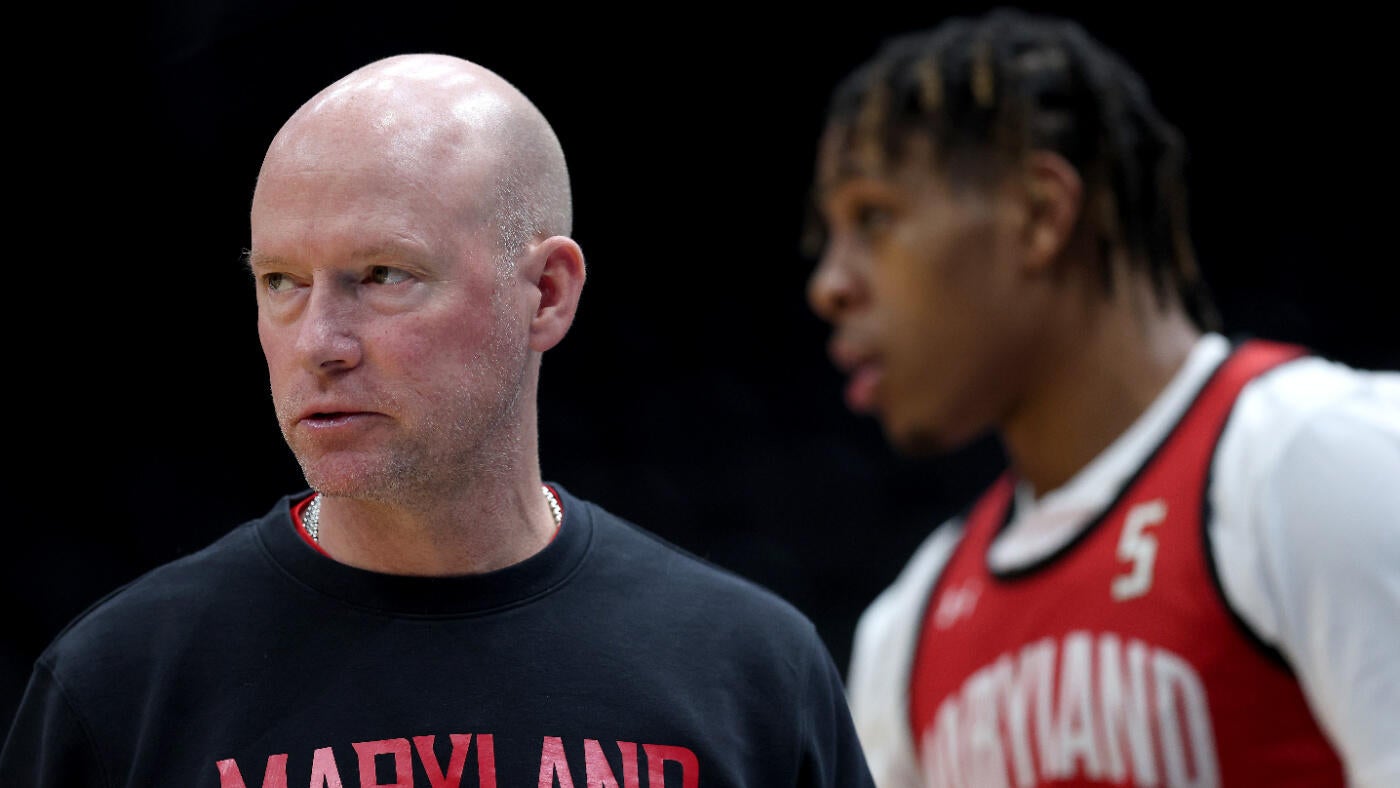
In theory, at least, Big East schools could spend the entire $20.5 million salary cap on just basketball. Or, more realistically, spend $8-10 million when schools in the Big Ten and SEC are largely in the $2.5-$4 million range. There has been talk about some conferences trying to instill sport-specific spending caps, but there is real skepticism that would fly sport-wide. Assuming it doesn’t, the Big East, along as its schools can come up with the cash without the big football-driven TV rights deals, could have a significant money advantage in revenue share spending.
Loser: Group of Five schools
For years now there have been comments about the chasm between the haves and have-nots growing larger, but that is only amplified with this settlement. It will be increasingly difficult for Group of Five schools — and even some smaller Power Four schools — to keep up with the bigger schools if they can’t fully fund the $20.5 million cap, which will only go up in the years to come. You’ll see schools partially fund in certain areas, including football and basketball, but it might be in the $2-3 million range for football when SEC and Big Ten schools will annually spend $13-16 million. There may still be some David vs. Goliath upsets in football like we saw last year (say, NIU over Notre Dame), and if the College Football Playoff format remains the same one, Group of Five school will still make the playoff, but it’ll be more challenging than ever for those schools to compete at the highest levels.
Loser: Non-revenue sports
Similar to the Group of Five concerns, the Olympic sports at many universities face a tough path moving forward. When athletic departments now have to share the revenue, it gets harder to pay for sports that lose money, which is everything that’s not football or basketball outside of a few exceptions at different schools. What does this look like in practicality? The doomsday option is eliminating sports altogether which some schools are already doing with sports like tennis that neither bring in revenue nor television exposure.
The less aggressive yet still impactful measures could include reducing scholarships, refusing to give coaches raises and even cutting back on the free meals available to every athlete. Athletic directors are looking for places to cut expenses everywhere and the non-revenue sports will be a popular place to look.
Winner: Billable hours
As the saying goes, billable hours are undefeated. That’s certainly true with the House settlement. The class action counsel, led by Jeffrey Kessler and Steve Berman, are expected to receive a whopping $484 million for their work in bringing the class-action lawsuit to completion. Considerable money has been spent by the NCAA and House defendants on attorneys, too. And, of course, there will likely be more lawsuits to come — especially from a Title IX angle — once the schools begin officially paying athletes. There’s never been a better time to be a lawyer with an interest in college sports.
-

 College Sports3 weeks ago
College Sports3 weeks agoPortal Update – Basketball and Gymnastics Take Hits
-

 College Sports3 weeks ago
College Sports3 weeks agoPortal Update – Basketball and Gymnastics Take Hits
-

 Professional Sports2 weeks ago
Professional Sports2 weeks agoJon Jones answers UFC retirement speculation as fans accuse champion of 'holding the belt …
-

 Health3 weeks ago
Health3 weeks agoBYU women's basketball guard injures ACL twice
-

 Youtube3 weeks ago
Youtube3 weeks agoXavier Legette taught Marty Smith his signature celly
-

 NIL2 weeks ago
NIL2 weeks ago2025 NCAA Softball Tournament Bracket: Women’s College World Series bracket, schedule set
-

 College Sports3 weeks ago
College Sports3 weeks agoIU basketball recruiting
-

 College Sports3 weeks ago
College Sports3 weeks agoNCDC Commitment Profiles: Cyclones’ Martins Moving On to Saint Anselm College • USPHL
-

 Motorsports2 weeks ago
Motorsports2 weeks agoWhy IHOP Rode With Dale Earnhardt Jr. In Amazon NASCAR Debut
-

 High School Sports3 weeks ago
High School Sports3 weeks agoToday in the MHSAA



































